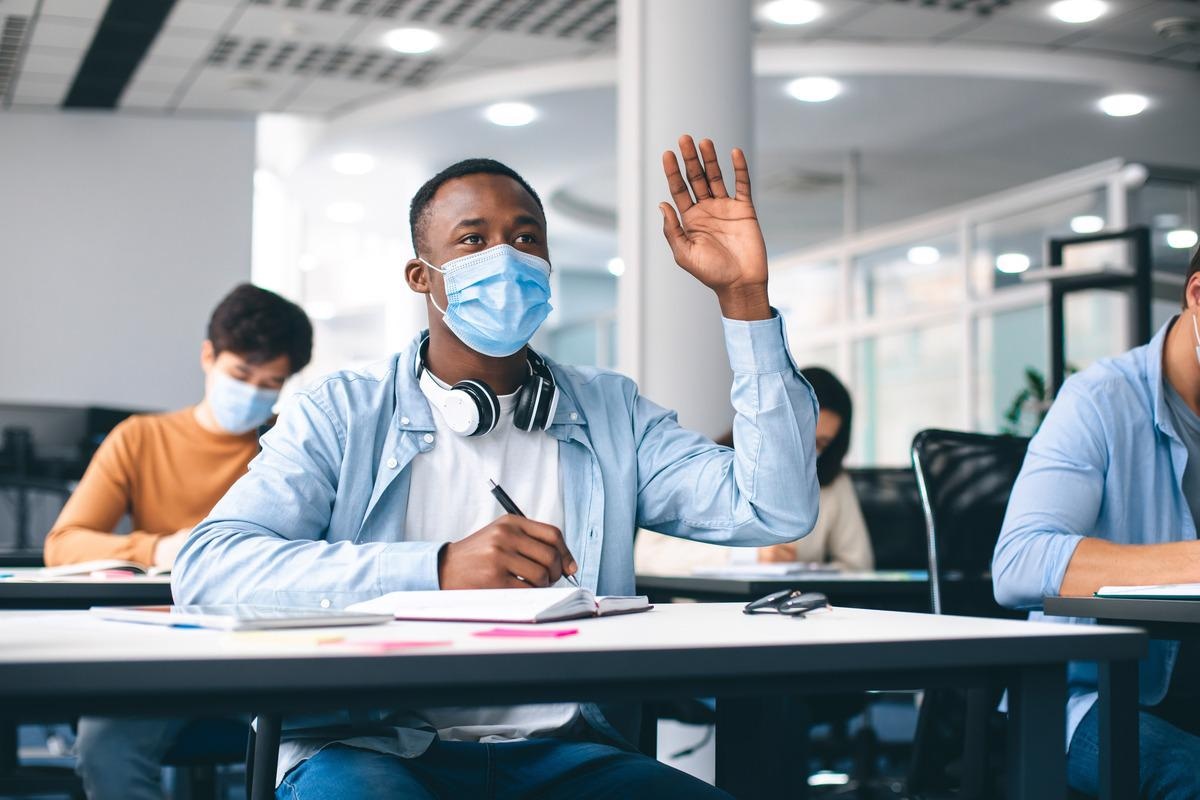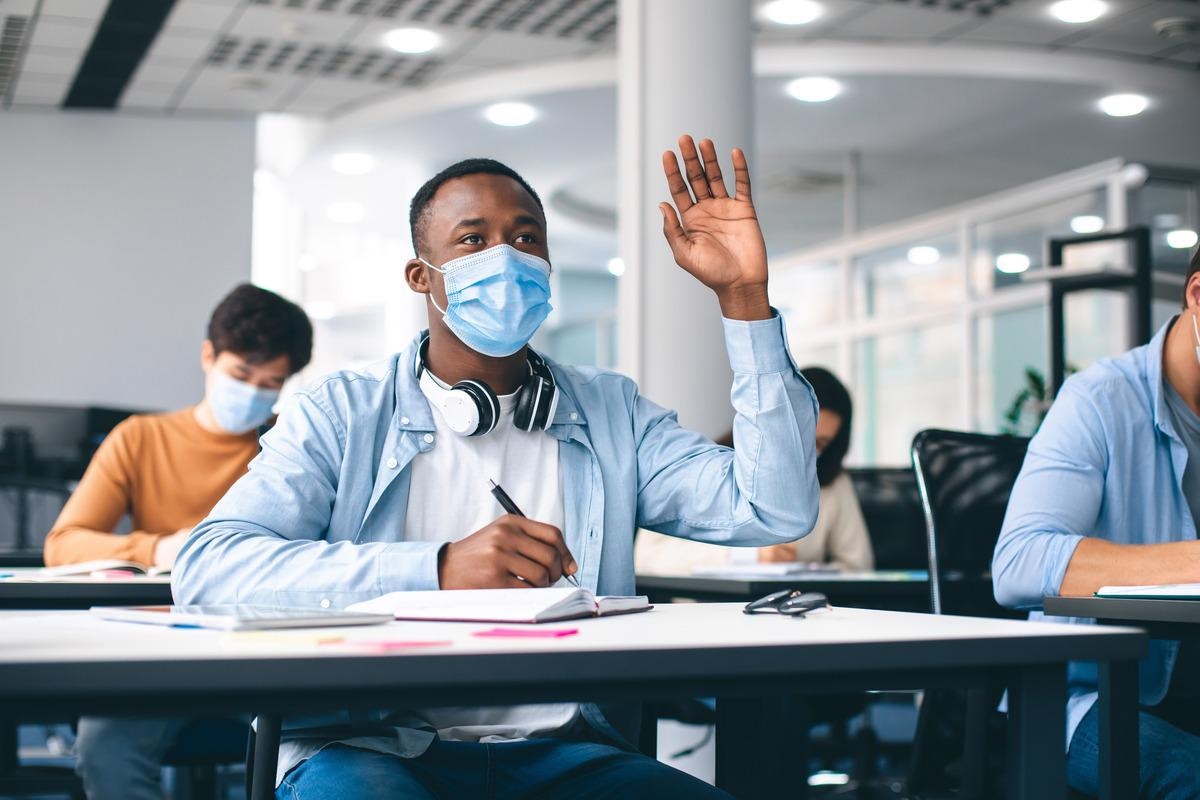A recent study posted to the medRxiv* pre-print server investigated the extent of severe acute respiratory syndrome coronavirus 2 (SARS-CoV-2) transmission in classrooms of a large urban university.

With the global administration of coronavirus disease 2019 (COVID-19) vaccines and the resulting reduction in SARS-CoV-2 infections, various educational institutes have reinstated in-class instruction. However, there is a lack of evidence regarding the impact of face masks, physical distancing, and vaccination on in-class SARS-CoV-2 transmission.
About the study
The present study identified occurrences of SARS-CoV-2 transmission in an in-class environment and used traditional epidemiology, viral genomics, and adaptive surveillance testing to predict viral transmission in over 150,000 class meetings.
The team collected data including contact tracing, campus-wide surveillance testing, and class rosters from Boston University (BU) from 15 September 2021 and 1 December 2021. In-person instruction at BU was resumed from 1 September 2021 with more than 150,000 in-person class meetings conducted over the study period. Each class meeting included two to over 400 individuals, with an average of 31 people per meeting.
Face masks were mandatory for all the students during in-class meetings while the faculty could remove their masks when lecturing from a distance of over six feet from the students. Surveillance testing frequency was also increased at BU. Furthermore, COVID-19 vaccinations were mandated as of 2 September 2021 as the BU defined vaccination compliance as either receipt of the full SARS-CoV-2 vaccine series or the documentation of a religious or medical exemption. Also, regular weekly testing was conducted by BU on the entire on-campus population with over 600,000 SARS-CoV-2 polymerase chain reaction (PCR) tests performed during the study period.
The PCR-positive samples were informed to the BU contact tracing team, who conducted personal interviews and analyzed class rosters to identify any potential physical contacts or sources of viral transmission. To identify specific instances of in-class transmission of the virus, the study defined in-class transmission as transmission among two or more COVID-19-positive people who attended the same in-person class and were not in close contact with each other outside the classroom environment.
Potential in-class transmission was further investigated by sequencing the whole SARS-CoV-2 genome obtained from COVID-19-positive samples. For each amplified viral sample, full-length genomes were aligned to the SARS-CoV-2 Wuhan-Hu-1 reference sequence. The team then drew comparisons within the genome sample and between other genomes identified from potential disease transmission scenarios.
Several samples having zero nucleotide differences were indicated to be part of a transmission event while samples with one nucleotide difference were potentially related to a transmission event. Furthermore, samples with two nucleotide differences were highly improbable of being associated with a transmission event and those with three nucleotide differences were deemed to be not linked.
Results
The study results showed that 98.5% of the faculty, 93.5% of staff, and 98.7% of students were fully vaccinated against COVID-19. Also, almost 0.14% of the samples subjected to PCR tests were SARS-CoV-2 positive. It was observed that most of the viral transmission events were related to living arrangements, extended contact-time occasions, or socialization while only a minority of the cases were indicated to be due to in-class transmission.
A total of nine occurrences of potential in-class transmission were found, which accounted for almost 0.0045% of all in-class meetings. Among these, seven potential transmission events were recognized to be of Pango-origin and had over three nucleotide differences, making them unlikely to be a result of classroom transmission.
One of the two remaining events illustrated low chances of in-class transmission. In this particular instance, three individuals who were in close contact tested SARS-CoV-2 positive over a duration of five days. Two of these had identical viral genomes and had consequential unmasked exposure outside the class environment because they were roommates. The person sitting between these two COVID-19-positive individuals also tested positive and had a viral genome with two nucleotide changes.
Conclusion
The study findings showed that in-class instruction is not a significant source of COVID-19 transmission when the class meetings are conducted under sufficient transmission abatement strategies.
The researchers believe that widespread SARS-CoV-2 vaccination and the implementation of risk mitigation measures like masking, social distancing, surveillance testing, and air filtration can negate classroom transmission risk further.
*Important notice
medRxiv publishes preliminary scientific reports that are not peer-reviewed and, therefore, should not be regarded as conclusive, guide clinical practice/health-related behavior, or treated as established information.
- Kayla J Kuhfeldt, Jacquelun Turcinovic, Madison L Sullivan, Lena Landaverde, Lynn Doucette-Stamm, Davidson H Hamer, Judy Platt, Catherine M. Klapperich, Hannah E Landsberg, John Connor. (2022). Minimal SARS-CoV-2 classroom transmission at a large urban university experiencing repeated into campus introduction. medRxiv. doi: https://doi.org/10.1101/2022.03.16.22271983 https://www.medrxiv.org/content/10.1101/2022.03.16.22271983v1
Posted in: Medical Research News | Medical Condition News | Disease/Infection News
Tags: Coronavirus, Coronavirus Disease COVID-19, covid-19, Epidemiology, Frequency, Genome, Genomics, Nucleotide, Polymerase, Polymerase Chain Reaction, Respiratory, SARS, SARS-CoV-2, Severe Acute Respiratory, Severe Acute Respiratory Syndrome, students, Syndrome, Vaccine, Virus

Written by
Bhavana Kunkalikar
Bhavana Kunkalikar is a medical writer based in Goa, India. Her academic background is in Pharmaceutical sciences and she holds a Bachelor's degree in Pharmacy. Her educational background allowed her to foster an interest in anatomical and physiological sciences. Her college project work based on ‘The manifestations and causes of sickle cell anemia’ formed the stepping stone to a life-long fascination with human pathophysiology.
Source: Read Full Article
